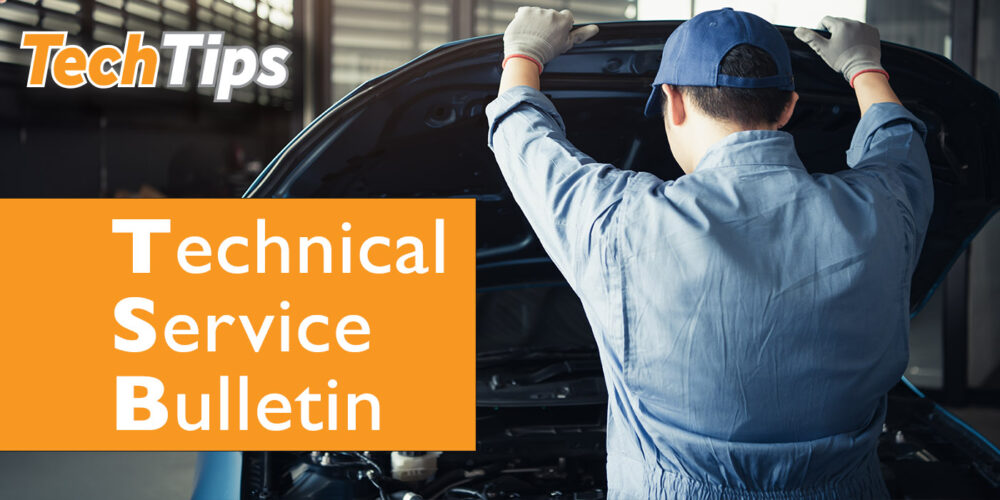Affected Vehicles:
1993: (AC) Dynasty/New Yorker/New Yorker Salon; (AG) Daytona; (AY) Imperial/New Yorker Fifth Avenue
1993-’94: (AP) Shadow/Shadow Convertible/ Sundance
1993-’95: (AA) Spirit/Acclaim/LeBaron Sedan; (AJ) LeBaron Coupe/Convertible; (AS) Town & Country/Caravan/Voyager; (ES) Chrysler Voyager (European market); and (LH) Concorde/Intrepid/ LHS/New Yorker/Vision
Note: This bulletin applies to vehicles with 41TE and 42LE transaxles built before Nov. 15, 1994 (transaxle ID code number XXX-2163-XXXX).
Symptom/Condition
Intermittent delayed transmission engagement at vehicle start-up in excess of three seconds. The transaxle may be cold or hot.
Diagnosis
Check the transaxle fluid level while the vehicle is on a level surface and the transaxle is at normal operating temperature using the following procedure.
Start the engine and allow to idle for minimum of one minute. With the parking brake and the service brakes applied, move the gear selector lever momentarily to each gear position. Place the gear selector lever in either Park or Neutral.
Check the transaxle fluid level; It should be in the HOT range of the dipstick. Adjust the fluid level as necessary. Use Mopar ATF type 7176 (P/N 4467721) if additional fluid is required.
Attempt to reproduce the condition described by the vehicle operator. If the gear engagement time exceeds three seconds, the garage shifts are considered delayed and the repair procedure should be performed.
Note: Vehicles with delayed transaxle engagement on start-up, after being parked for several days, are considered normal and will not be affected by performing this bulletin.
Other possible conditions that might cause delayed transaxle engagement are a sticking or frozen PRNDL switch, or a transaxle front pump with excessive gear clearances.
Repair Procedure
1. Raise the vehicle with an appropriate hoist.
2. Clean the transaxle oil pan and mating area thoroughly, preferably with steam.
3. Remove the transaxle oil pan. Remove all sealant from the transaxle oil pan and mating area. Clean the inside of the oil pan and magnet.
4. Check the transaxle oil filter engagement and O-ring condition. Cut or poorly installed O-rings also may cause delayed garage shifts.
5. Separate the transaxle oil filter and O-ring from the valve body and discard.
6. Remove the 18 bolts attaching the valve body and separate the valve body from the transaxle and properly dispose of the transmission fluid.
7. Install the new valve body (P/N 4659085, 41TE; P/N 4659084, 42LE). Torque the attaching bolts to 40 in.-lbs. (5 Nm).
8. Install the new oil filter (P/N 4504048, 41TE; P/N 4796730, 42LE).
9. Apply a 1/8” bead of Mopar RTV sealant, P/N 4318025, or equivalent, on the mounting flange of the transaxle oil pan. Also apply the sealant to the underside of the attaching bolts. Torque the attaching bolts to 165 in.-lbs. (19 Nm).
10. Pour 4 quarts of ATF through the fill tube.
11. Start the engine and allow it to idle for a minimum of one minute. With the parking brake and the service brakes applied, move the gear selector lever momentarily to each gear position. Place the gear selector lever in either Park or Neutral.
12. Check the transaxle fluid level and add an appropriate amount of transmission fluid to bring the level to 1/8” (3 mm) below the ADD mark on the dipstick.
13. Recheck the fluid level after the transaxle is at normal operating temperature. The level should be in the HOT range of the dipstick.
Technical service bulletin courtesy of Mitchell 1.
For additional information, visit www.mitchell1.com.













